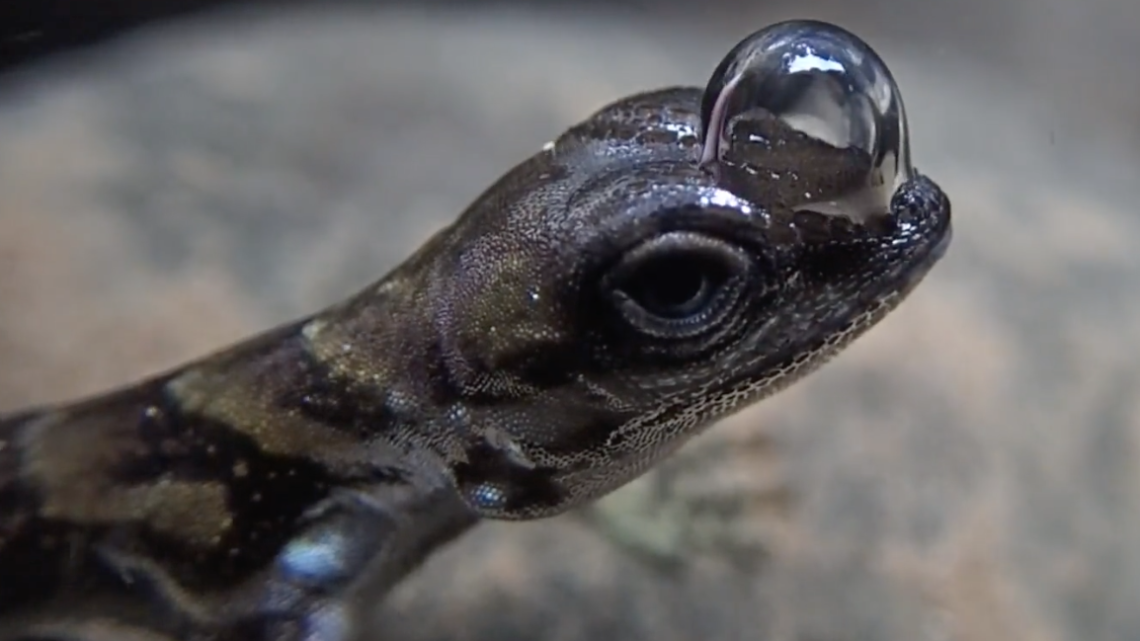
Reptiles have always been spirit animals for The Incredible Shrinking Man research. From the shrinking iguanas of the Galapagos islands to the unsinkable Jesus gecko, reptiles often have something interesting to tell us about the consequences of size and the advantages of smallness. Cold-blooded reptile bodies respond more strongly to environmental changes than mammals, amplifying signals and clues that might go unnoticed by the warm-blooded. That doesn’t mean we shouldn’t listen.
The small Costa Rican water anole is known as the scuba diving champion of the lizard world. To evade predators its first line of defense is either camouflage or running away, but if necessary it dives under water and can stay there for over 16 minutes, much longer than most other lizards. It can do this, and avoid being eaten, because it wears an air bubble over its head and snout as an extra supply of oxygen. It then recirculates the air in the bubble, a method known as “rebreathing”, until the oxygen runs out. However, for animals whose body temperature depends on the environment, time spent in cool water can have some tradeoffs. Upon exit the limbs may feel al little stiff and slow, and getting back to a temperature that allows the anole to search for and digest food, find a mate, or even escape predation again, might take a while. Being small helps to warm up faster but it also cools you down a lot quicker. As we embrace a desire to become smaller it would be wise to remember the embodied reptile knowledge.